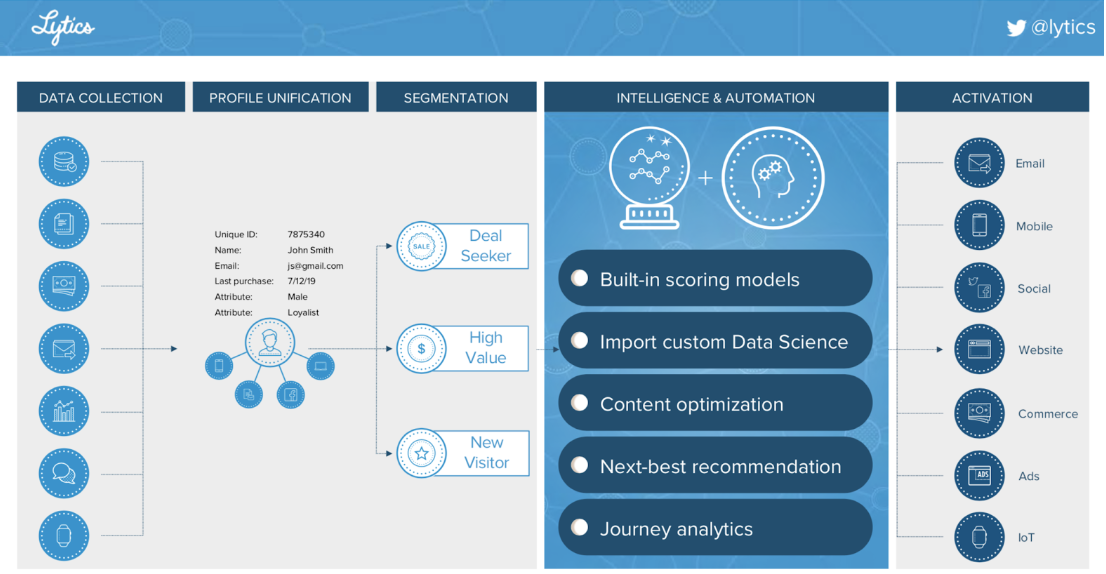
Originally published on the Lytics blog.
Imagine leaving the corner store with a carton of milk, only to have the store clerk follow you down the street into other shops offering to sell you the same carton of milk you just bought. How would you feel? Surprised by their instant amnesia? Annoyed that they won’t take a hint and skedaddle? Angry enough to take your business elsewhere?
Customers wouldn’t put up with behavior like that from merchants in real life, so why should customers have to be online? Unfortunately, retargeting is often doing just that—hounding customers across the Internet with offers for things they either don’t want or already have. What a wasted investment.
The Conversion Conversation
Let’s look at another scenario. Within 20 seconds of walking into the corner store for milk, the clerk should be able to give it to you if they have it, apologize if they don’t, and send you on your way.
This is what I call the Conversion Conversation, which is a simple, human conversation that we all know how to conduct. But many marketers today are forgetting to have this simple conversation with their customers.
Why we’re missing the conversation
In 2018 marketers spent $37.88 billion on programmatic display ad media. Meanwhile, 68% of marketing agencies and 49% of brands have a dedicated budget for retargeting. I don’t know how much of that actually boosted conversions, but media budget spent on converted customers is not money well spent. And hounding customers wherever they go online could be damaging to your brand.
I appreciate that these marketers are making a sincere effort to level-up their efficiency by taking advantage of new media capabilities, but they can’t get greater efficacy if their creative and messaging are not also operating at this higher level. To create this new content, marketers can leverage predictive marketing platforms to get an idea of what customers are most likely to respond to next. Once marketers have the right tools and the right content, we can shift our focus to crafting the right conversations.
If we’re not pouring ourselves into understanding who we are speaking to and what they want, we’re not having a conversation. For example, if someone has already made a purchase or expressed interest in a particular type of content what would best serve them next? Is it a complimentary item or additional information on a related topic? Perhaps a related service, or simply a branding message to shore-up post-purchase satisfaction? Or maybe the answer is to leave them alone. These are all different responses that we should have at the ready with compelling creative and relevant messaging, to be delivered by your MarTech stack at the right time.
Here at Ready State, we believe empathy for your customer is the key to connecting. We use Lytics to glean actionable insights from our clients’ first-party data. Their behavioral scoring helps our planners better understand customer motivations. The content affinity engine and dynamic audience segmentation helps us meet the customers where they are. These predictive marketing tools are like afterburners to help us learn and optimize the conversion conversation.
Product marketing managers already think like this and do it very well when it comes to apps and eCommerce websites. But online advertising and website content has fallen behind. By default, our peers in product management think in terms of the customer journey, and create content for multiple scenarios. Advertisers can apply this way of thinking by treating the ads as their product, and ensuring they work with different customer journeys.
How to start with the Conversion Conversation
We’re all going to have to master the Conversion Conversation sooner or later. You may already have the data and the tools in-house. If not, your creative and media agencies certainly do. (At Ready State, we have a bionic workflow that has replaced outdated heuristics with actual customer data, and scales asset creation with creative automation.) Let them know you’re going to need them to work closely with you on this.
Think in terms of conversations you might have with a customer in person. What’s your best guess about where these conversations would lead? Some could lead to an immediate sale, others might require more education and time together, and yet other conversations could end because the customer may just be browsing with no intention of purchasing.
Define your segments in terms of desired and undesired characteristics, like “ready to buy” or “kicking the tires”, and “likelihood to churn” or “unlikely to engage”. CDPs like Lytics make these segments directly addressable, and this makes for marketing communications that can speak to customer emotions, rather than traditional demographic groups.
Next, identify the top customer goals you want to fulfill, with a customer goal being what they want from your brand, like a well made, high-end backpack without the high price. Then craft the customer journeys that lead to each customer goal, noting that the journey is cross-channel, and that each goal may have several customer journeys.
Identify which content topics your customers engage with the most, and partner with your creative agency to develop as much content as you can afford (you can and will create more content later).
 Courtesy of Lytics
Courtesy of Lytics
Then pull up a chair and watch what happens.
What are your customers actually responding to? What’s not working and where is their direction focused? You’ll have ideas about how you would change those conversations, so roll up your sleeves and make incremental changes to test what might resonate more, or less. It’s going to take a fair amount of effort to get this right for your brand, and chances are you’re going to have to recalibrate your efforts regularly, but it’s worth it. A recent benchmark report by The Relevancy Group found that email marketers using AI were generating 41% more revenue than those embracing manual personalization.
Owning the Conversation
Creating, crafting and managing the conversation shifts power from the sales team to the marketing team, but also requires a fundamental shift in the way of thinking. Marketers have to be ready to take on some of the responsibilities of a salesperson and use the tools to have that conversation with millions of customers simultaneously.
Companies are beginning to recognize that all the different departments play a role in their customer experience, from sales, to the website, to customer service. In fact, customers already expect it, and brands that require them to navigate each department separately will find themselves left behind.
In general, the Conversion Conversation is about a return to the basics of how we listen and talk to our customers. It’s vital you team up with partners who are willing to rethink the entire customer approach. Partner with creative and media agencies that will get into the trenches and help you design and create the content. Like the shopkeeper that knows what the customer wants and buys, you want to master that personal and helpful conversation with the customer. When done properly, the customers will thank you for that and will reward you with future engagement.
By being empathetic and meeting your customers where they are, we elevate the interaction from a transaction to a relationship.
What the (near) future holds
These predictive marketing tools will do more than just enable a conversation, they may soon predict what your customer will want and when they will want it.